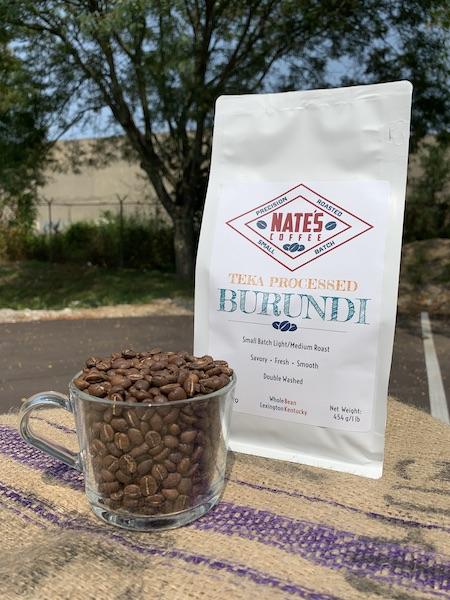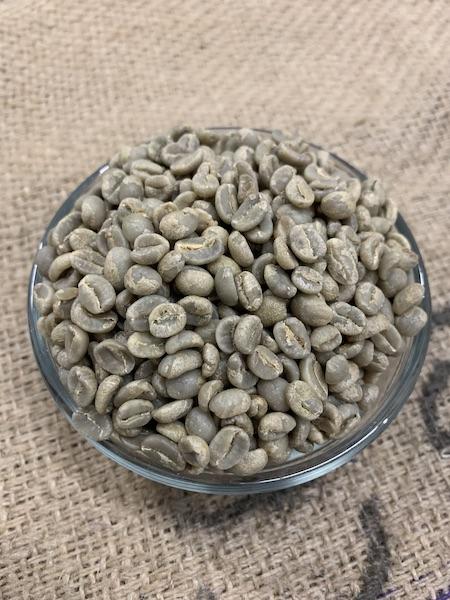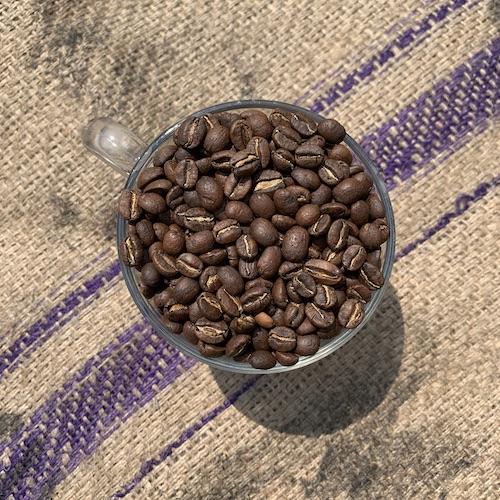
This month’s special offering is sourced from the Land of a Thousand Hills, Burundi, and double washed at Teka, one of their top-rated processing stations. Double washed coffee, also referred to as fully washed or double fermented coffee, is traditional to Burundi. Other coffee-producing countries nearby, such as Kenya and Rwanda, have adopted this method as well. Let’s take a look at this unique process and understand why this method excels in this region.
What Does Double Washing Accomplish?
Double washing is a specialty processing method that improves the quality of coffee. During this process, the coffee beans ferment for an extra, longer cycle, underwater which requires a second wash. Because of this, farmers are able to triple grade their coffee during the different stages of the process to ensure the highest quality possible. Double washing can reduce high acidity levels in coffee, add more complex textures, and enhance the overall flavor profile of the beans.
Burundi experienced a total pivot in their coffee processing in 2008. The industry moved production away from high quantities of coffee towards higher quality, specialty coffees. The double washing method has allowed Burundian coffee farmers to meticulously grade their own crops. Because of this, they can sell their beans for a higher price.
From the coffee plant to your cup, these beans go through a long and tedious process. To start, farmers will bring their harvest to one of the many community washing stations in Burundi. However, some go to newer, cooperative stations that require membership. Here’s a look at how the coffee is processed using their traditional double washing method.
The Double Washing Process
- First, farmers harvest their coffee cherries at peak ripeness and then sort them by hand. Then, they look for any breaks to the skin of the cherry and discard any that are broken. These could have imperfections or bacterial growth like the infamous potato defect.
- Then, farmers put the coffee cherries into a water trough and separate them between floaters and sinkers. A floating cherry indicates that it is unripe. If they float, farmers remove them and will process them later on to sell as lower graded coffee. This is the first time they grade the coffee for quality.
- The same day as harvesting, farmers pulp the cherries mechanically, using metal disks, to start removing the skin.
- After pulping comes the first fermentation stage. The beans ferment for 12-24 hours, weather depending. This stage uses aerobic fermentation to ensure that all the flesh is removable.
- Post-fermentation, workers move the coffee into channels of water for the first wash. They use rakes to push the beans through the water channels. The coffee keeps washing until no flesh is remaining.

- Some under mature beans will float. Farmers will remove them to sell as a lower grade coffee. This is the second grading.
- After the initial wash, the coffee goes through a second fermentation process. This time, they submerge the coffee in tanks of water to undergo anaerobic fermentation. This second fermentation is where double washed coffee variates from regularly washed coffee beans. This fermentation cycle will be slightly longer, up to 48 hours. During this time, the beans improve in quality and the flavors become more pronounced.
- After the second fermentation, the beans are washed for an additional time, warranting the name double washed. Most importantly, this ensures the removal of any last trace of mucilage, even that which sticks in the tiny crack of the bean.
- Lastly, they lay the coffee out on parchments to dry in the sun. Here, they will hand sort each coffee bean into the final grades. The coffee can take up to 12 days to dry to the proper moisture level before being packaged and sold.
It takes a lot of work to manage these unique beans we at Nate’s have been roasting!
Our Teka Processed Burundi Roast

The beans used in this month’s seasonal roast grew in the Kirimiro region of Burundi, which specializes in high-quality coffees. It was double washed at the Teka processing station. This station sits high in the sky at 6332 ft. above sea level. Teka is the highest altitude washing station in Burundi, allowing it to have access to the freshest water possible to use in their double washing process. Teka is also one of the highest-rated processing stations in Burundi, due to their co-op management, ecology, and coffee quality. Because of this, we pushed to make sure we did this coffee justice! Also, we had so much fun experimenting with this uniquely processed coffee and absolutely adore the final outcome.
With notes of nori and soy, our Teka Processed Burundi roast slowly sweetens as it cools. These double washed, triple graded beans pair well with sushi and pineapple upside-down cake.
Want more info about Burundian coffee? Read Part 2! Burundi, War, & the Dark Side of Coffee. I will be exploring the relationship between the horrific tragedies the Burundian Civil War and its sordid relationship with the coffee industry.
References
Uncommon Grounds by Mark Pendergrast
Sweet Maria’s Coffee Library: Rwanda + Burundi fundamentals by Thompson Owen and Christopher Schooly
Kilimanjaro Specialty Coffees in HD YouTube Channel
Things you buy through our links may earn us a commission.


Pingback: Best Geisha Coffee Beans for 2022 - Espresso Machine News